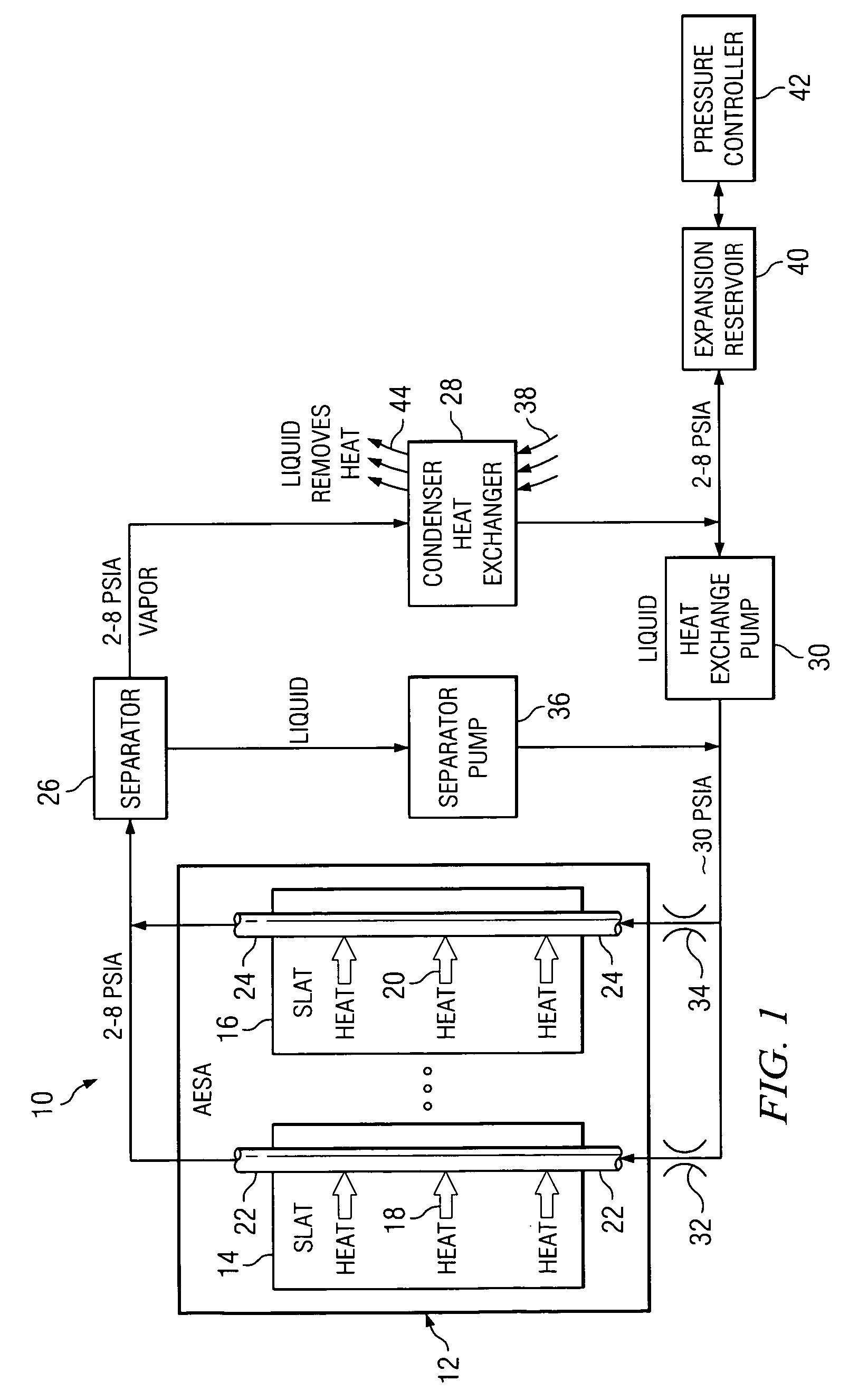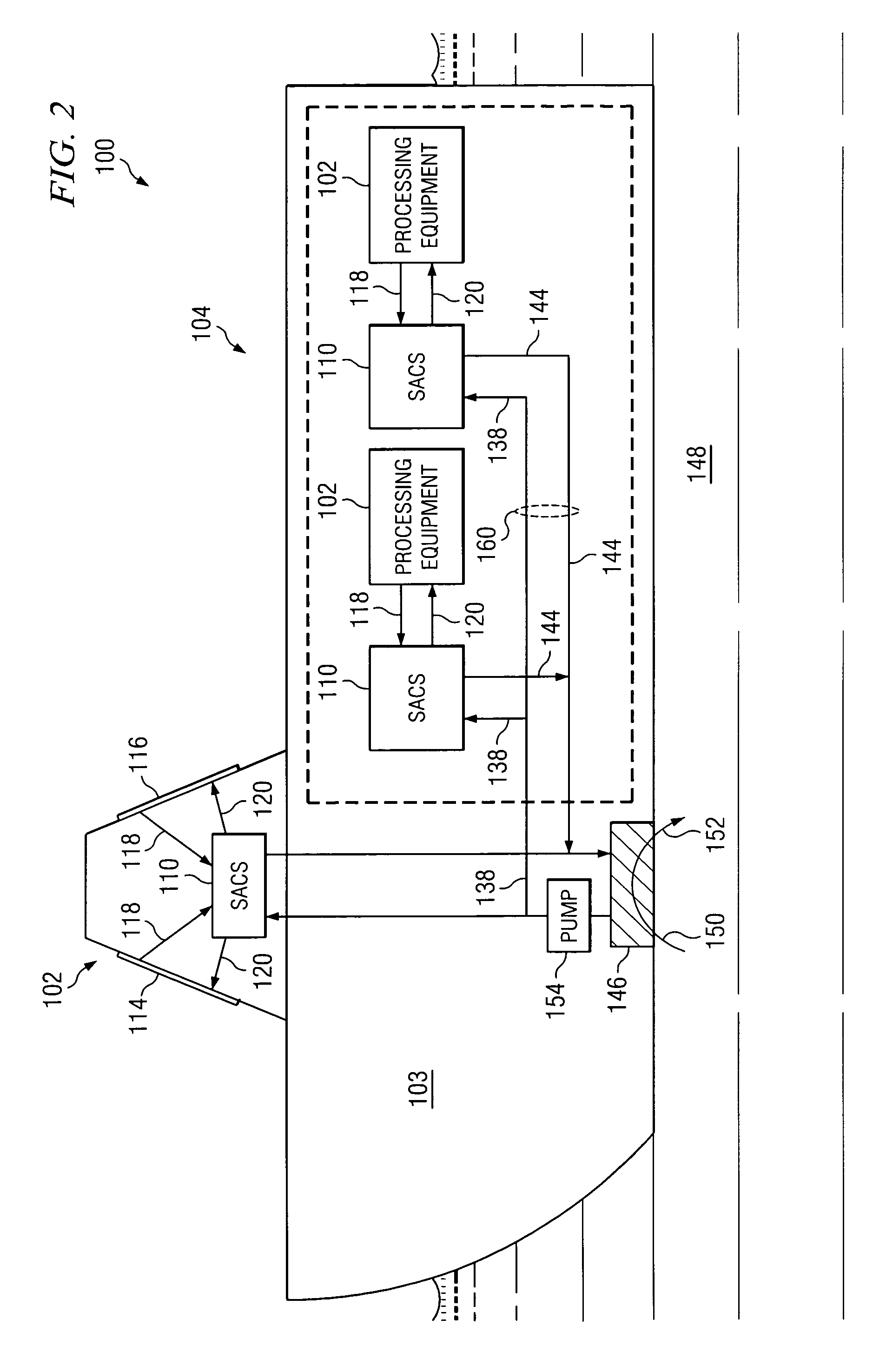Method and apparatus for cooling with coolant at a subambient pressure
a subambient pressure and cooling method technology, applied in the field of cooling techniques, can solve the problems of substantial heat dissipation without the use of compressors, and achieve the effects of avoiding large vapor lines, substantial heat dissipation, and freeing valuable space on the ship
- Summary
- Abstract
- Description
- Claims
- Application Information
AI Technical Summary
Benefits of technology
Problems solved by technology
Method used
Image
Examples
Embodiment Construction
[0012]Example embodiments of the present invention and their advantages are best understood by referring to FIGS. 1-2 of the drawings, like numerals being used for like and corresponding parts of the various drawings.
[0013]FIG. 1 is a block diagram of an apparatus 10 that includes a phased array antenna system 12. In one embodiment, the antenna system 12 includes a plurality of identical modular parts that are commonly known as slats, two of which are depicted at 14 and 16. A feature of the present invention involves techniques for controlling cooling the antenna system 12, or other heat-generating structure, so as to remove appropriate amounts of heat generated therein.
[0014]In the illustrated embodiment, the electronic circuitry within the antenna system 12 has a known configuration, and is therefore not illustrated and described here in detail. Instead, the circuitry is described only briefly here, to an extent that facilitates an understanding of the present invention. In partic...
PUM
 Login to View More
Login to View More Abstract
Description
Claims
Application Information
 Login to View More
Login to View More - R&D
- Intellectual Property
- Life Sciences
- Materials
- Tech Scout
- Unparalleled Data Quality
- Higher Quality Content
- 60% Fewer Hallucinations
Browse by: Latest US Patents, China's latest patents, Technical Efficacy Thesaurus, Application Domain, Technology Topic, Popular Technical Reports.
© 2025 PatSnap. All rights reserved.Legal|Privacy policy|Modern Slavery Act Transparency Statement|Sitemap|About US| Contact US: help@patsnap.com



